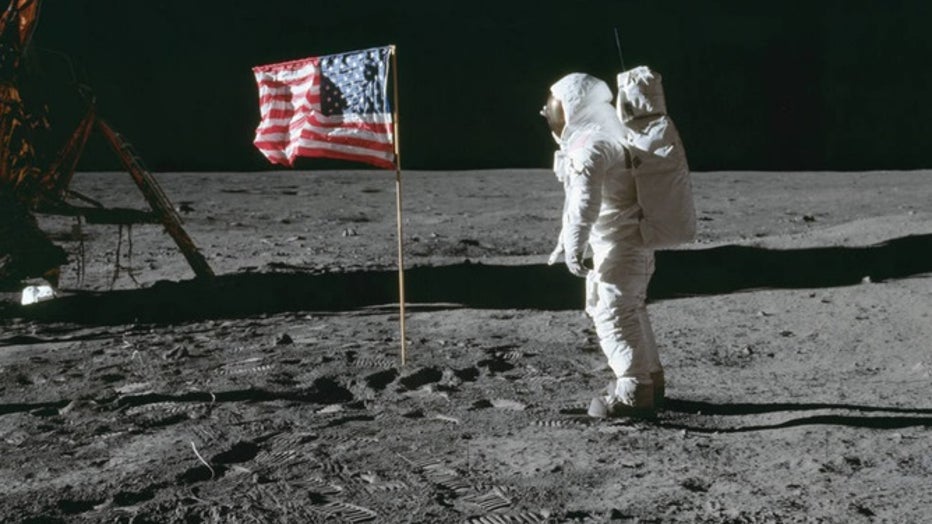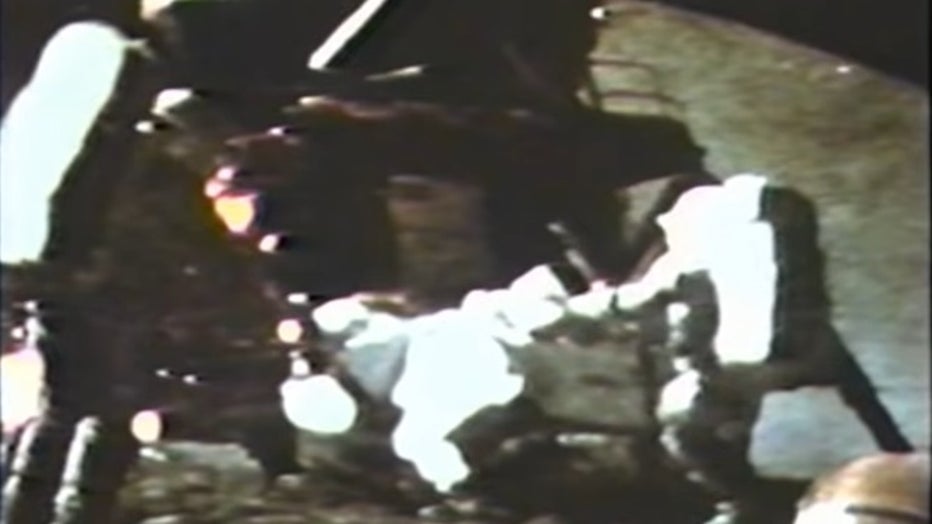See the objects humans left behind on the moon

Artemis 1 mission: Orion spacecraft captures breathtaking images of the Earth and moon
As Orion began its closest approach to the moon yet, NASA shared live views of the moon and Earth as seen from the Artemis I spacecraft.
Orbiting some 238,855 miles away from Earth, the moon is the planet's only natural satellite, but during the last six decades, the celestial body has become home to thousands of pounds of human-made materials, collecting dust and waiting out time until future exploration.
The first spacecraft crashed into the moon in 1959, but during Apollo missions in the late 1960s and early 1970s, humans walked the moon and purposefully left some items on the 4.5-billion-year-old celestial body to cement their status in fame.
NASA keeps a detailed catalog of manmade material on the moon that it says is meant to help protect lunar artifacts, especially as the realm becomes more accessible to space programs and private enterprises.
The space agency lists the country of origin, mission and location of each object left on the moon's surface.
NASA DEVELOPS "MOON DUSTER" TO ZAP AWAY LUNAR DUST
The first humans landed on the moon in 1969 as part of Apollo 11. Neil Armstrong and Buzz Aldrin were responsible for many of the mementos placed on the surface of the moon to remember those who had been lost in space travel as well as unplanned debris left behind after they were instructed by mission control to lighten the load of their spacecraft in order to make it back home to Earth.

Map of artifacts on the moon (NASA)
NASA says many of the items from the Apollo missions are either historic or had a significant scientific value, but to any unsuspecting reader, some of the objects on the list might appear similar to those you would find at a junkyard or even a garage sale.
The catalog runs the gamut from batteries and wires to golf balls and even human waste.
Many of the objects are small, and due to the lack of an atmosphere and no winds on the moon's surface, there aren't many chances, outside of a meteoroid strike, for items to move around.
NASA DEVELOPS "MOON DUSTER" TO ZAP AWAY LUNAR DUST
Due to impending moon exploration, which could include the Artemis III mission and others, NASA developed guidelines to protect previous landing locations, and President Donald Trump even signed a law making it illegal to interfere with any of the historic sites.
When asked by NASA if any of the leftover materials could one day prove to be useful, Stan Starr, a deputy project director and chief engineer at the Kennedy Space Center, said, "Astronauts could potentially replace the batteries in the rovers and reuse them, if their gears and other moving parts are not full of dust. Perhaps they could recharge the oxygen and carbon dioxide scrubbers in the Apollo backpacks, or get some use out of the helmets and gloves. But after all this time on the surface, dust could have gotten into everything. Use of this equipment would require careful analysis and planning, since it wasn't designed to be reused."
Here's a look at only a few of the hundreds of items that future astronauts could find on the surface of the moon.
Half a dozen American flags
The United States is the only country to have had astronauts land on the moon's surface, and during the years of the Apollo program, six American flags were left behind.
The first flag was planted during the Apollo 11 mission and is when the iconic image of Buzz Aldrin saluting the American flag on the moon's surface was born.

Apollo 11 astronaut Aldrin saluting the flag at Tranquility Base (NASA)
In addition to the country's flag, NASA reports one from the U.S. Marine Corps was left on the moon during the Apollo 15 mission back in 1971.
In 2020, China became the second country to put a flag on the moon during its uncrewed Chang'e 5 probe.
WATCH OUT FOR THESE ASTRONOMICAL EVENTS IN 2023
100 $2 dollar bills
Of the 1.4 billion two-dollar bills estimated to be in circulation by the Federal Reserve, at least 100 are reported to be on the surface of the moon.
David Scott, Alfred Worden and James Irwin, with the Apollo 15 mission, are credited for leaving the money behind during the fourth crewed lunar landing.
It is unclear if the astronauts intended to leave all the money there, but if anyone wanted to use the money for airfare, it wouldn't make a dent in the cost of a ticket to the moon.

Apollo15 moonwalk NASA coverage (NASA)
The NASA Office of Inspector General estimated the price tag of trying to return astronauts to the celestial body as part of the Artemis program to be at $93 billion spent between fiscal years 2012 and 2025.
UFO OVER TURKEY? LEARN WHAT MAKES THESE CLOUDS APPEAR SO ALIEN-LIKE
Fore! Watch out for golf balls
The first American in space was also the first to play golf on the moon's surface. Alan Shepard rode aboard the Mercury-Redstone 3 mission in 1961 and a decade later reached the moon's surface on an Apollo flight.
Commanding the Apollo 14 mission, Alan Shepard walked on the moon on February 5, 1971.
It was then that the avid golfer took out a six-iron and launched a few golf balls.
On a video stream back at Houston's mission control, Shepard could be heard saying one of his shots went on "miles and miles and miles."
The golf balls are still reported to be on the Fra Mauro region of the moon.
Shrink-wrapped family photo
During the Apollo 16 mission, pilot Charles Duke left behind a family photo that featured himself, his wife and his two sons.
The photo was said to be shrink-wrapped, and on its back are the words "This is the family of Astronaut Duke from Planet Earth. Landed on the moon in April 1972."

Apollo astronauts had the opportunity to bring personal mementos to the moon. Charlie Duke left a family portrait behind.(NASA)
Leaving the photo on the moon was one of the last acts Duke did during the crew's three-day stay.
Due to the moon being constantly exposed to cosmic rays and solar flares, the over-40-year-old imagery has probably faded away, but the message will likely live on forever.

